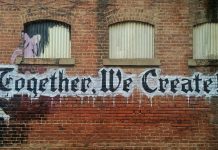It is not a secret that Aruba and other countries have been focusing on the role of innovation in fostering socio-economic development for a more sustainable future. It has been my personal mission since I was an undergrad student at the University of Aruba to research the possible contribution of a creative industry on Aruba’s socio-economic and cultural growth. This column has been a great tool to share my results and to inform the Aruban community and visitors on the importance of creativity in today’s society.
Recently, I handed in my master thesis which analyzed the possible policy synergy between the Aruban creative industry and knowledge economy. Over the weeks ahead I will breakdown my thesis in different segments with the intention of introducing Aruba to its new triple treat: the synergy between creativity, knowledge and innovation.
Moving forward within the 21st century will demand some policy attention to secure economic growth and social well-being of the Aruban people. Most of the time it seems like policy decisions made are so disconnected with the reality of human behavior. In order to understand the dynamics of this synergy, one interesting concept that has been unfolded is the linkage between human growth and economic development. In past columns, I presented the breakdown of sustainability, where people, the planet and profit coexist with each other. However, it seems more difficult than it seems.
Human Growth vs. Economic Development
For those who are not familiar with Maslow’s Hierarchy of Needs, it is a psychology theory formalized by Abraham Maslow (1943) in his paper “A Theory of Human Motivation”. In this paper Maslow presents his findings on the different stages of human growth.
This patterns was illustrated as a pyramid with the foundation being “basic needs” (physiological needs) which leads to “safety”, “communication” (social belonging and self-esteem) and “creative self-actualization”. In order for human motivation to move up the pyramid, each level must be satisfied. To pursue intrinsic motivation, the first layers of needs to be met are basic needs, which include: health, food, water, sleep, clothes, and shelter (SDG 1,2,3 and 6). Next, you have safety needs, which include: personal security, emotional security, financial security, health and well-being (SDG 3, 4, 5, 8 and 10). After that, you have social belonging and self-esteem, which include: friendships, intimacy, family, self-confidence, independence, and freedom. Lastly, there is the creative self-actualization, which includes parenting, utilizing and developing abilities and talents, and pursuing goals (SDG 4, 5, 9, 10 and 11).
Interestingly, if we consider these layers of human needs, we can also transform them into economic development. See, if you think about the “basic needs”, we can transform this as the agriculture economy. The same way we can transform “safety” as the industrial economy and “communication” as the information economy. Lastly, the “creative self-actualization” as the triple threat: the synergy between creativity, knowledge and innovation. Creativity in this sense is based significantly on social and personal values (cooperation, trust, etc.), not only economic values (such as profit), and produces an interaction between social, political, and cultural life.
When it comes to the knowledge economy, a great distinction is made between knowledge-based and knowledge driven economies. A knowledge-based economy is when knowledge is one of the main means and goals of economic production and exchange, representing a key economic resource. While, a knowledge-driven economy is when knowledge is the primordial goal of economic production and exchange, and the most valuable economic resource. However, when it comes to the creative economy, it is based on mass and constant creativity involvement in the production and distribution of new knowledge, new technologies, new practices, and new contents, and those economies with mass and constant creativity play the prevalent part in the creation of wealth and economic growth. From this angle, it simply does not make sense to not treat knowledge economy, creativity economy, and innovation economy as interchangeable concepts and possible for merging.
Overall, it is important to consider the connection between the creative industry and knowledge economy. Even when it comes to sustainability or the desire to secure growth of the economy and the protection of the environment at the same time, it will require a balance between people, profit and the planet. People in the sense that human growth and their intrinsic needs should form part of economic growth. Same as economic development could flourish through a human-centered approach. New ideas on how this synergy can work will only be the beginning of the new era of a diversified Aruba. The highest peak of the pyramid is where this triple threat could manifest, thus this means that at the top of the pyramid both the creative industry and knowledge economy can increase the capacity for innovation on Aruba. Through further research, effective policy making, good collaboration, and institutional partnership we can transform Aruba in the innovation living lab it is destined to be. Q















